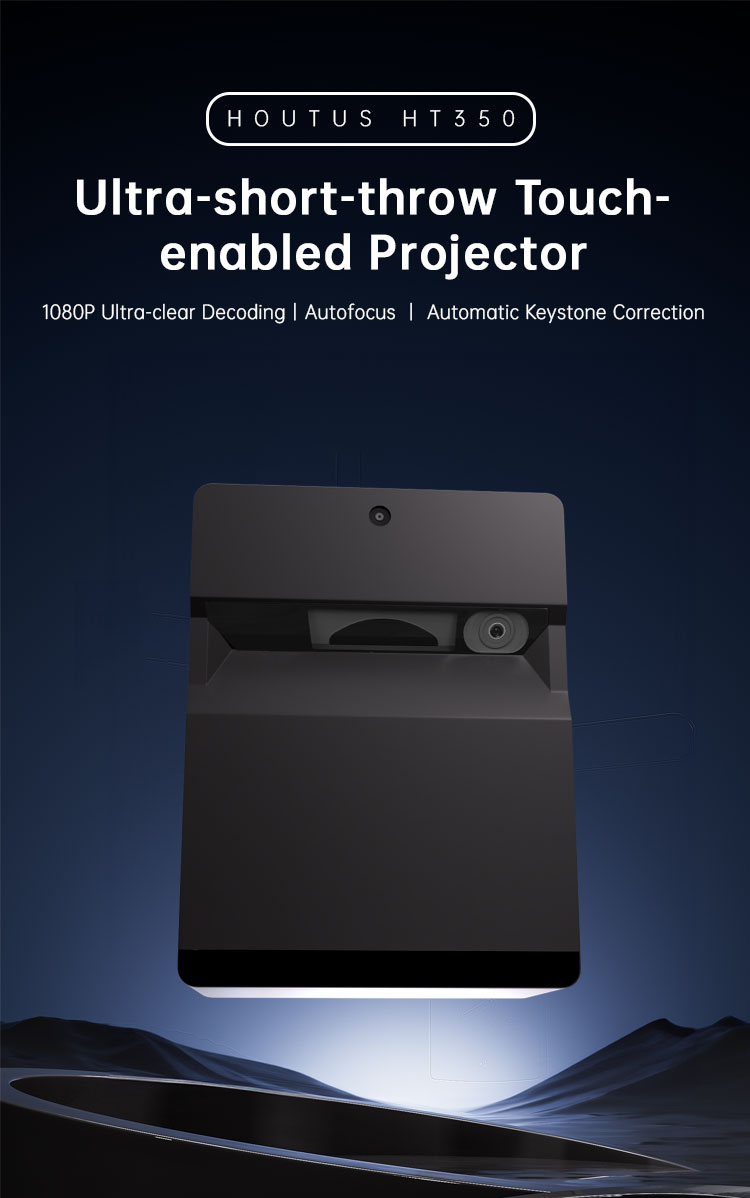- Select Language
In today’s fast-changing digital era, the classroom is no longer limited to chalkboards and textbooks. Technology has revolutionized how teachers teach and how students learn. Among all modern tools, LED projectors for classroom and education have become one of the most effective and versatile teaching aids available.
With vivid visuals, energy efficiency, and user-friendly operation, LED projectors help educators deliver lessons that are interactive, engaging, and impactful. From elementary schools to universities, these projectors are reshaping the educational landscape and bringing ideas to life.

1. Why LED Projectors Are the Future of Education
Visual Learning Made Easy
Research shows that visual content increases learning retention by up to 65%. LED projectors allow teachers to display high-quality images, videos, and interactive lessons that capture students’ attention and make complex topics easier to understand.
Instead of reading slides or whiteboards, students can see, hear, and experience the learning material — transforming passive learning into active engagement.
LED Technology = Long-Term Savings
Unlike traditional lamp projectors, LED projectors use light-emitting diodes that can last up to 50,000 hours — 10 times longer than standard lamps.
This means schools and institutions save thousands of dollars on bulb replacements and maintenance, making LED projectors a smart long-term investment.
2. Key Benefits of LED Projectors for Classrooms
1. Superior Image Quality
LED projectors produce vibrant colors and consistent brightness even after years of use.
With resolutions ranging from 720p to 4K, they provide crystal-clear visuals perfect for displaying text, photos, diagrams, and videos in high detail.
2. Instant On/Off Function
No more waiting for warm-up or cool-down time — LED projectors power on instantly, allowing teachers to start lessons right away and switch between topics smoothly.
3. Quiet and Cool Operation
Thanks to low heat emission, LED projectors run almost silently — creating a calm classroom atmosphere and avoiding fan noise distractions.
4. Compact and Portable
Modern LED projectors are lightweight and portable, allowing teachers to move between classrooms or use them for mobile teaching and training sessions.
5. Environmentally Friendly
LED projectors consume up to 70% less energy and contain no toxic mercury, making them safe for the environment and sustainable for long-term institutional use.
3. How LED Projectors Enhance Teaching and Learning
Interactive Learning
With built-in WiFi and Bluetooth connectivity, LED projectors easily connect to tablets, laptops, and smartphones.
Teachers can share educational apps, quizzes, or presentations wirelessly, encouraging collaboration and real-time participation.
Multimedia Lessons
From documentaries and science animations to 3D diagrams and virtual experiments, LED projectors support rich multimedia content that appeals to different learning styles — auditory, visual, and kinesthetic.
Online and Hybrid Education
In a post-pandemic world, hybrid learning is the new norm. Many LED projectors come with smart operating systems (Android-based) that allow teachers to stream online lessons, use Zoom or Google Meet, and access cloud-based teaching materials directly.
4. Features That Matter in Classroom Projectors
When choosing LED projectors for educational use, schools should consider features that ensure reliability, quality, and ease of use.
| Feature | Description | Ideal Range |
|---|---|---|
| Brightness (Lumens) | Determines clarity in bright rooms | 3,000–5,000 lumens |
| Resolution | Sharpness of text and visuals | 1080p or higher |
| Contrast Ratio | Distinguishes light/dark areas | 10,000:1 or more |
| Lifespan | Lamp durability | 30,000–50,000 hours |
| Connectivity | HDMI, USB, WiFi, Bluetooth | Multi-device support |
| Portability | Weight and size | Under 3 kg preferred |
These specs ensure that the projector performs consistently even under classroom lighting conditions.
5. Connectivity and Smart Integration
Modern LED projectors support multiple input options and wireless connections, making setup simple and flexible.
Wired Connections
HDMI & USB ports for laptops and document cameras
VGA for older school computers
Audio out for speakers or PA systems
Wireless Connections
WiFi projection for mobile devices
Bluetooth for external audio systems
Miracast / AirPlay for screen mirroring from iOS or Android devices
Teachers can easily connect their devices and start lessons within seconds — no IT assistance required.
6. Ideal Use Cases for LED Projectors in Education
| Educational Level | Application | Benefits |
|---|---|---|
| Kindergarten & Primary | Storytelling, interactive games | Keeps young learners engaged |
| Middle & High School | Science demos, history visuals | Enhances understanding of abstract concepts |
| College & University | Presentations, seminars | Supports multimedia lectures |
| Training Centers | Skill development workshops | Portable and efficient for instructors |
LED projectors are adaptable across all learning levels, helping both teachers and students achieve better outcomes.
7. Energy Efficiency and Sustainability
Education institutions are increasingly focused on sustainability.
LED projectors are eco-friendly, using low wattage and generating minimal heat, reducing overall power consumption in schools.
They also:
Produce less CO₂ emissions
Require no toxic bulb disposal
Operate efficiently for years without performance loss
This not only supports environmental goals but also aligns with modern “green campus” initiatives.
8. How to Set Up an LED Projector in the Classroom
Setting up your LED projector is simple — here’s how educators can get started: